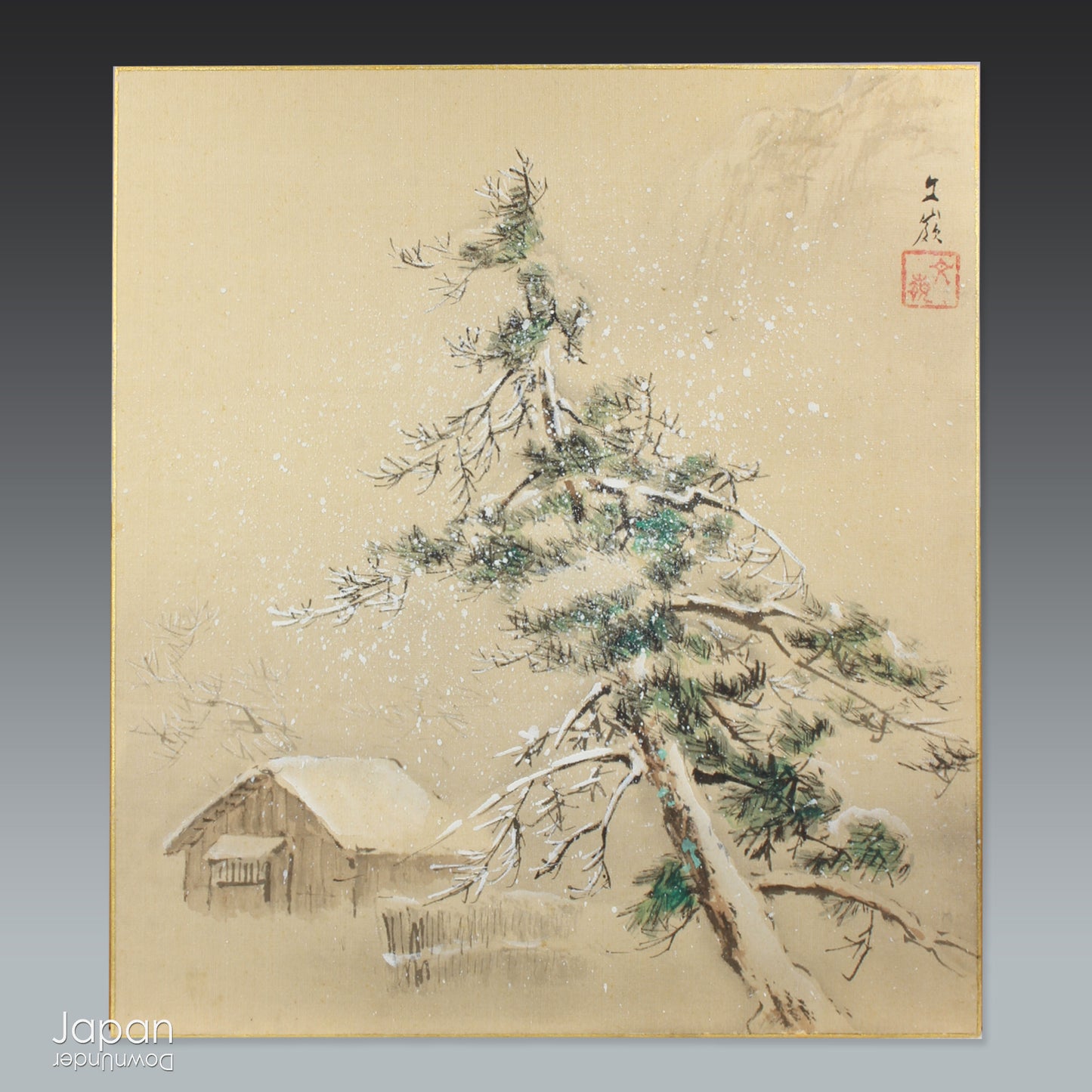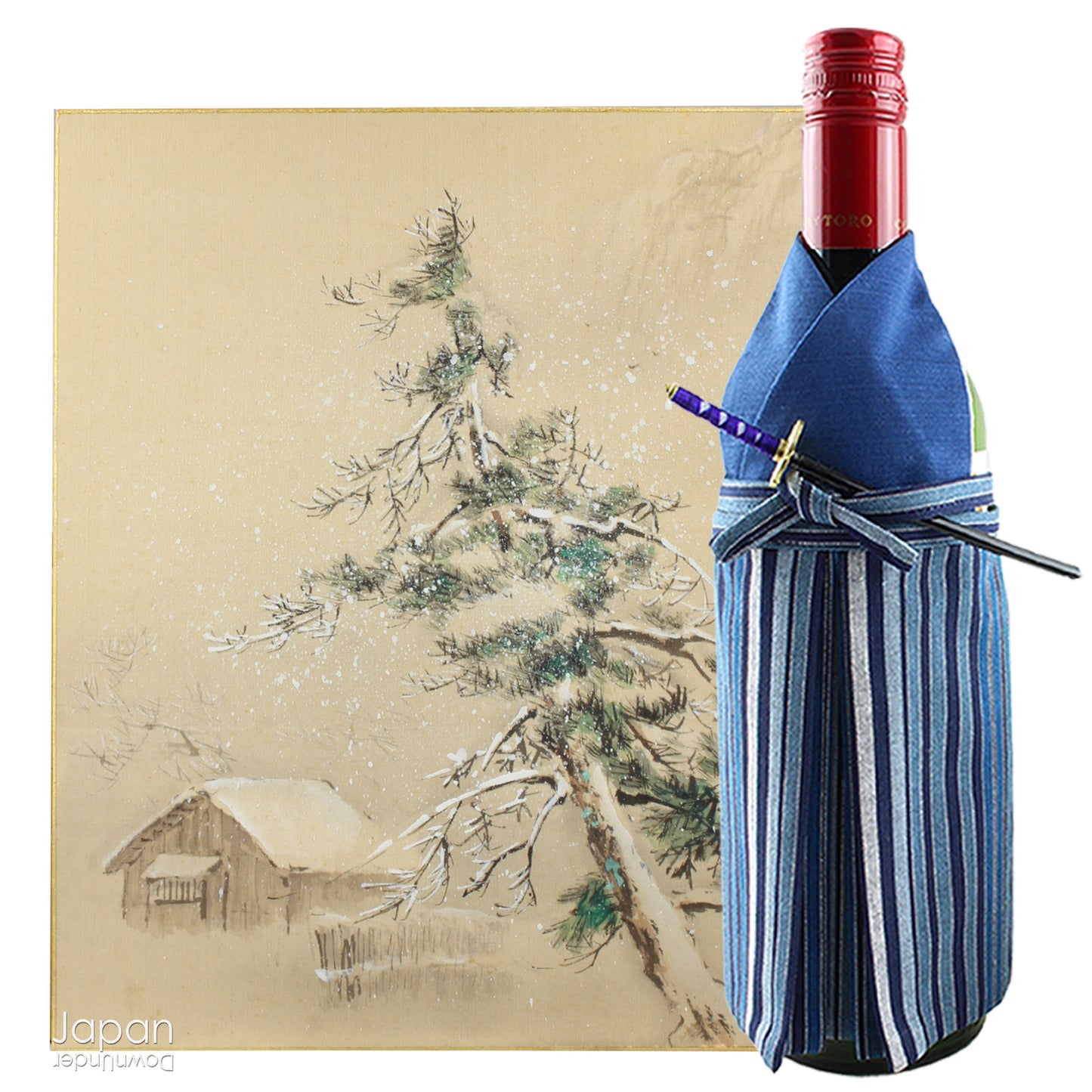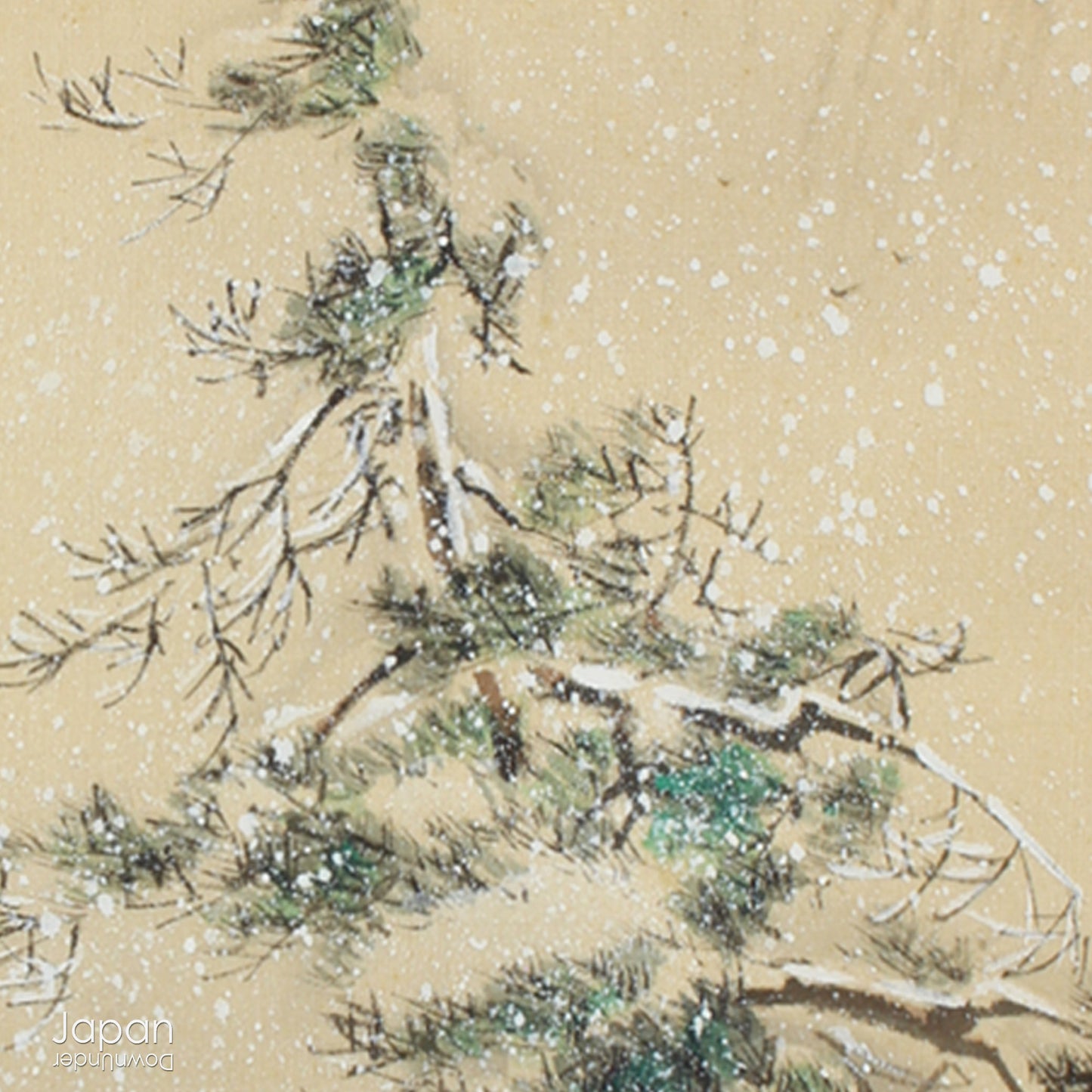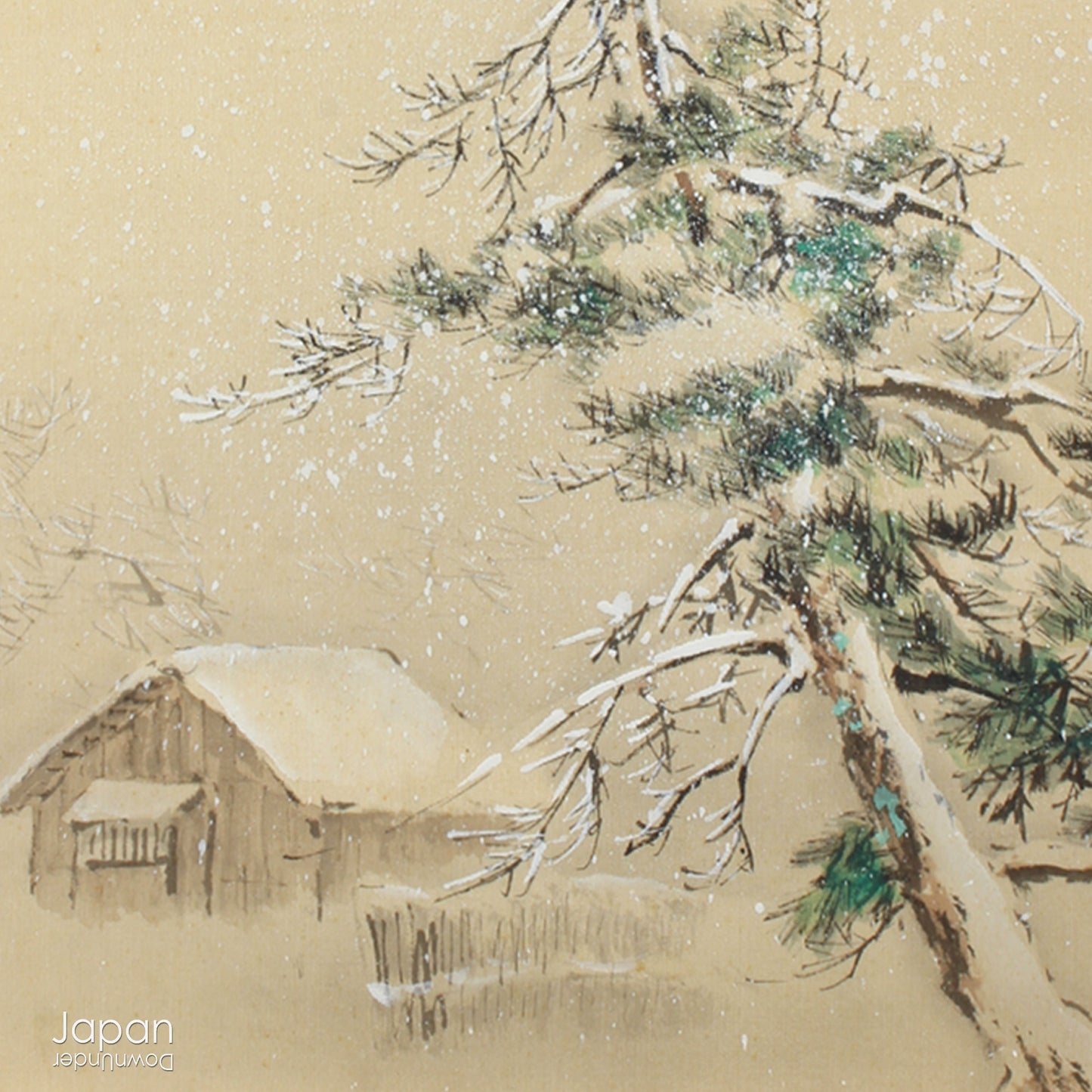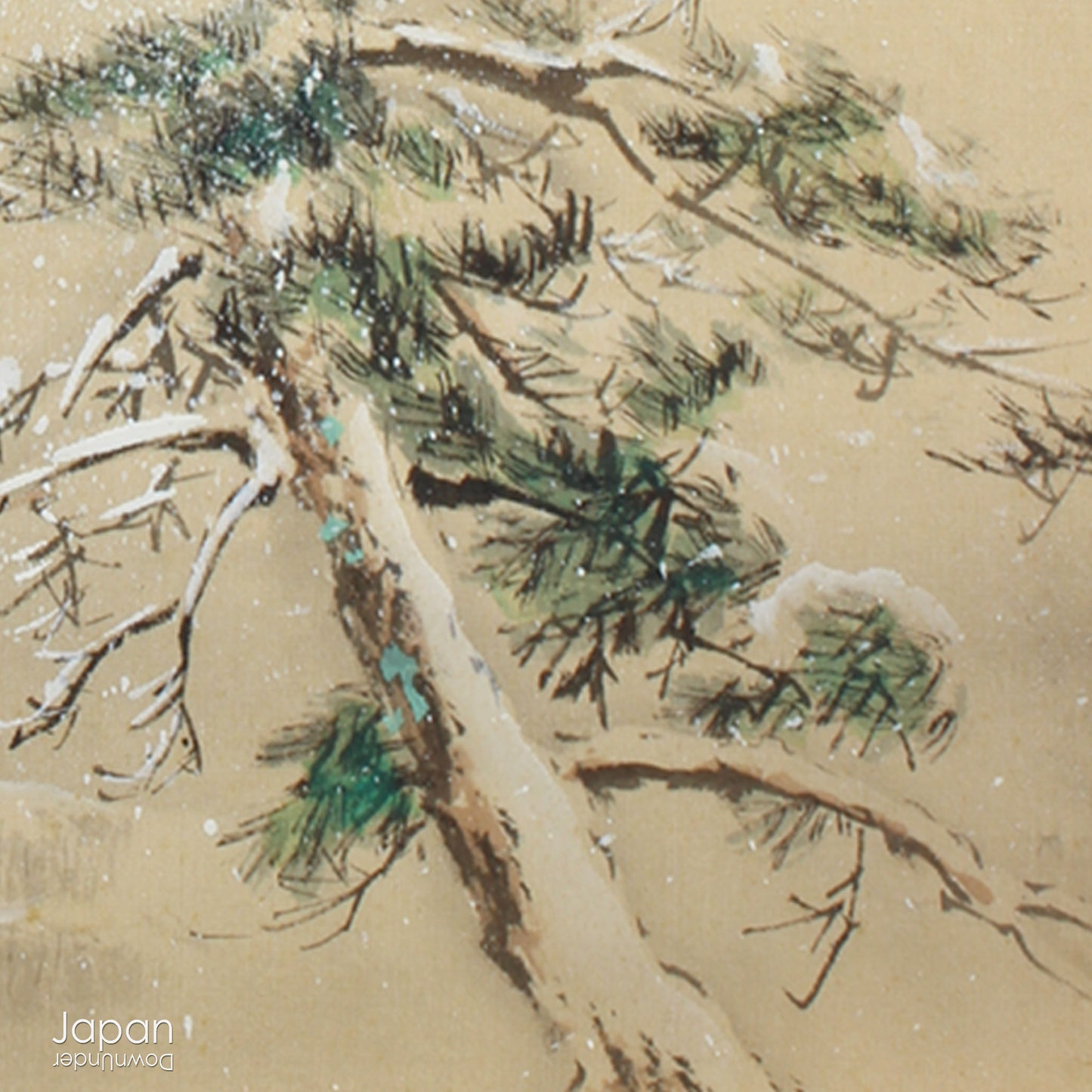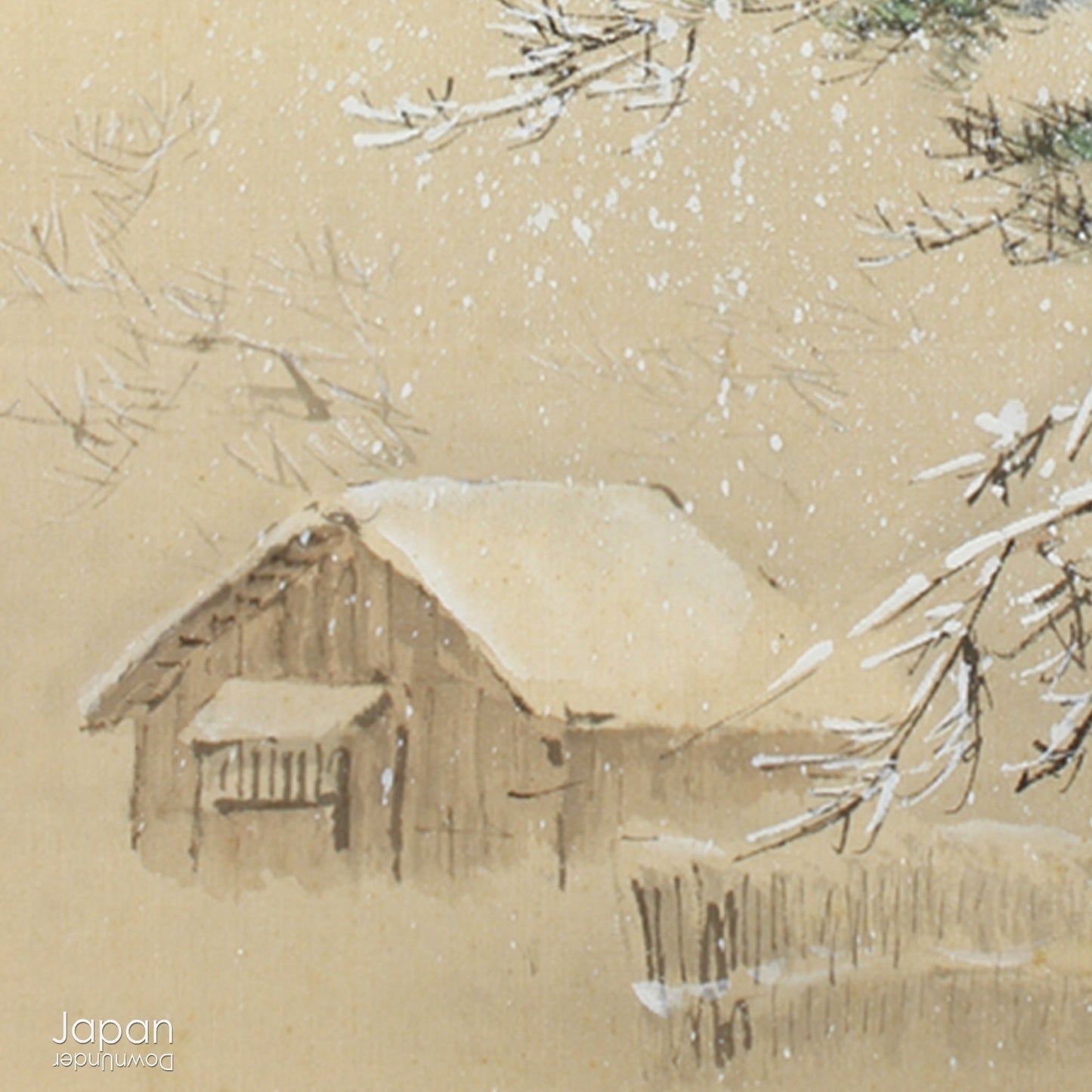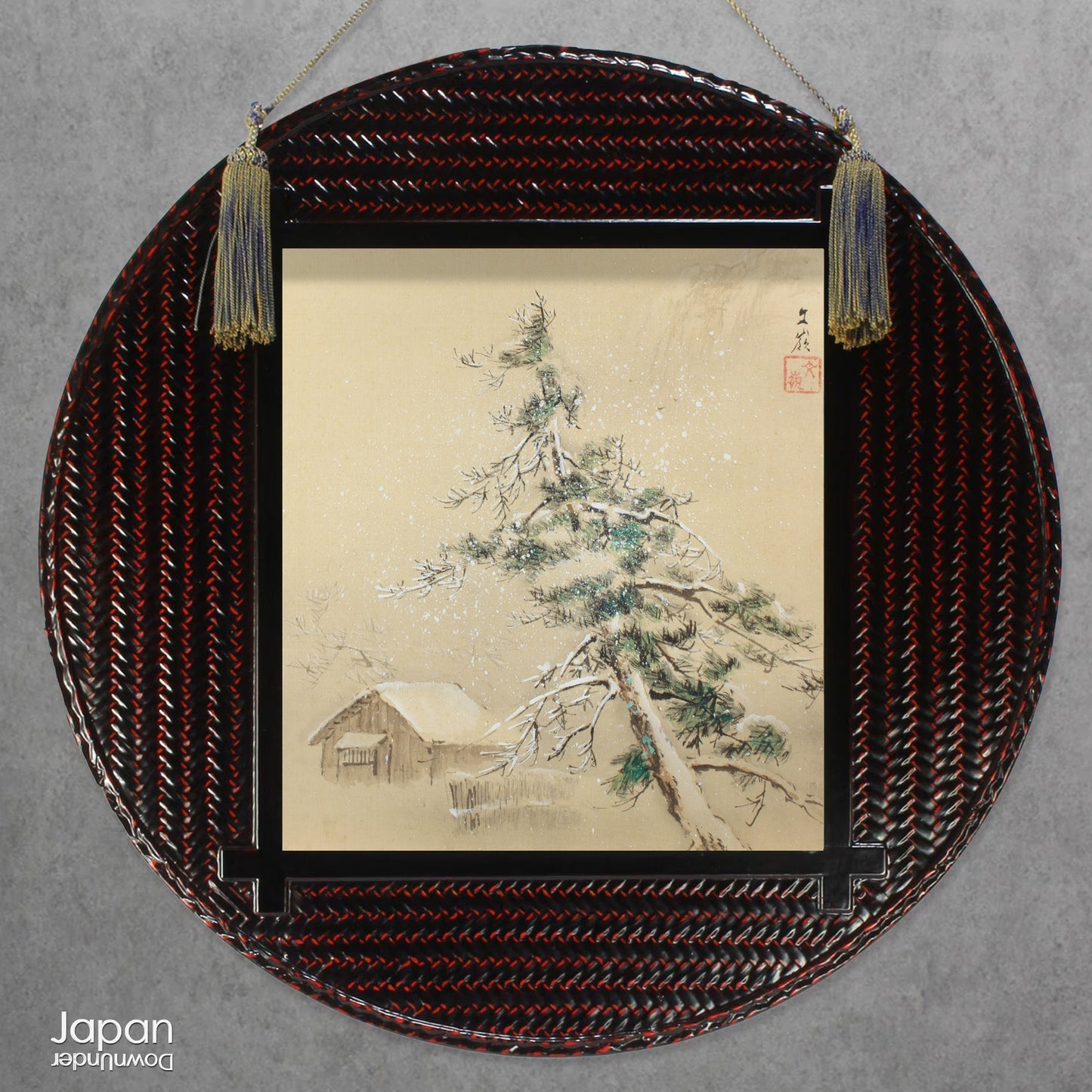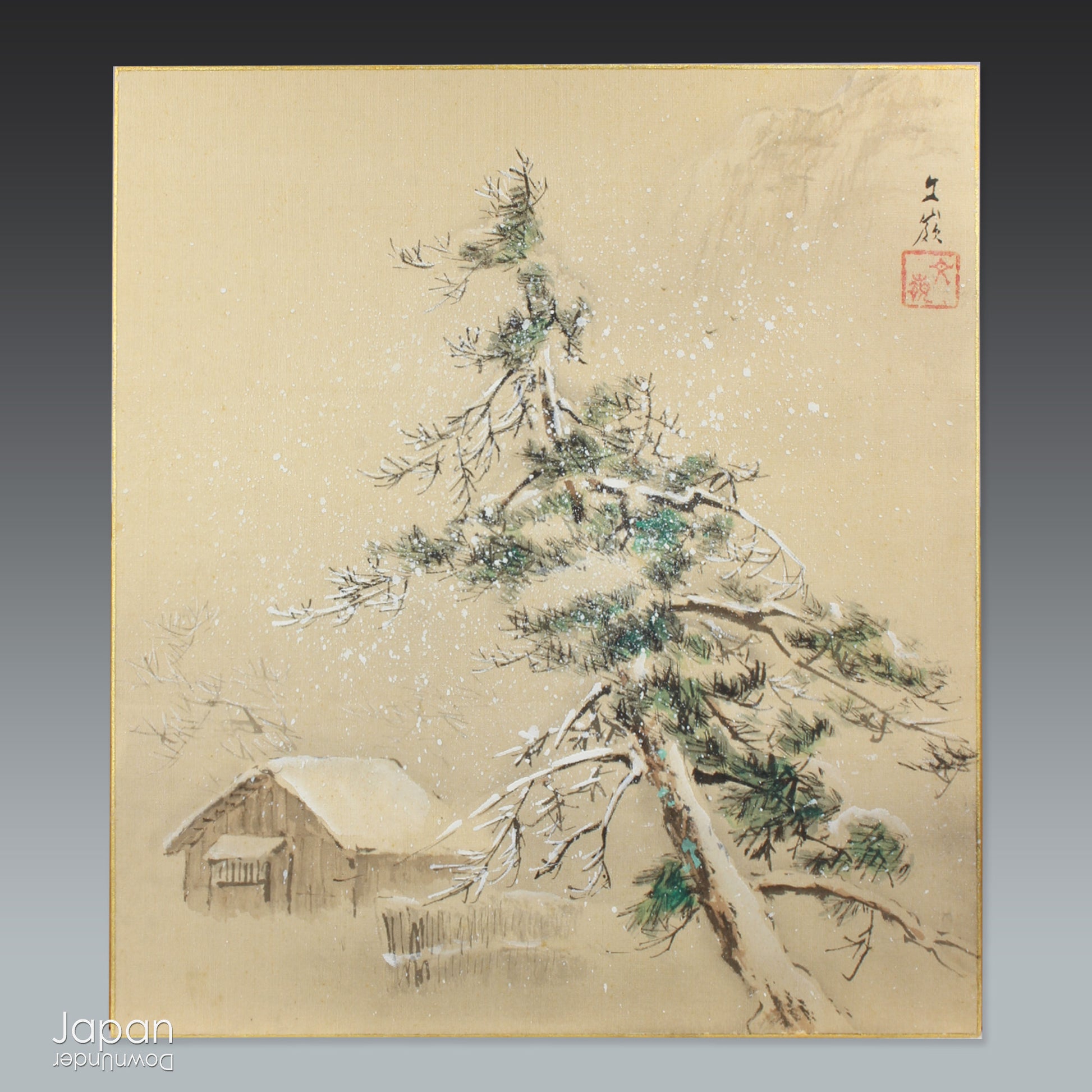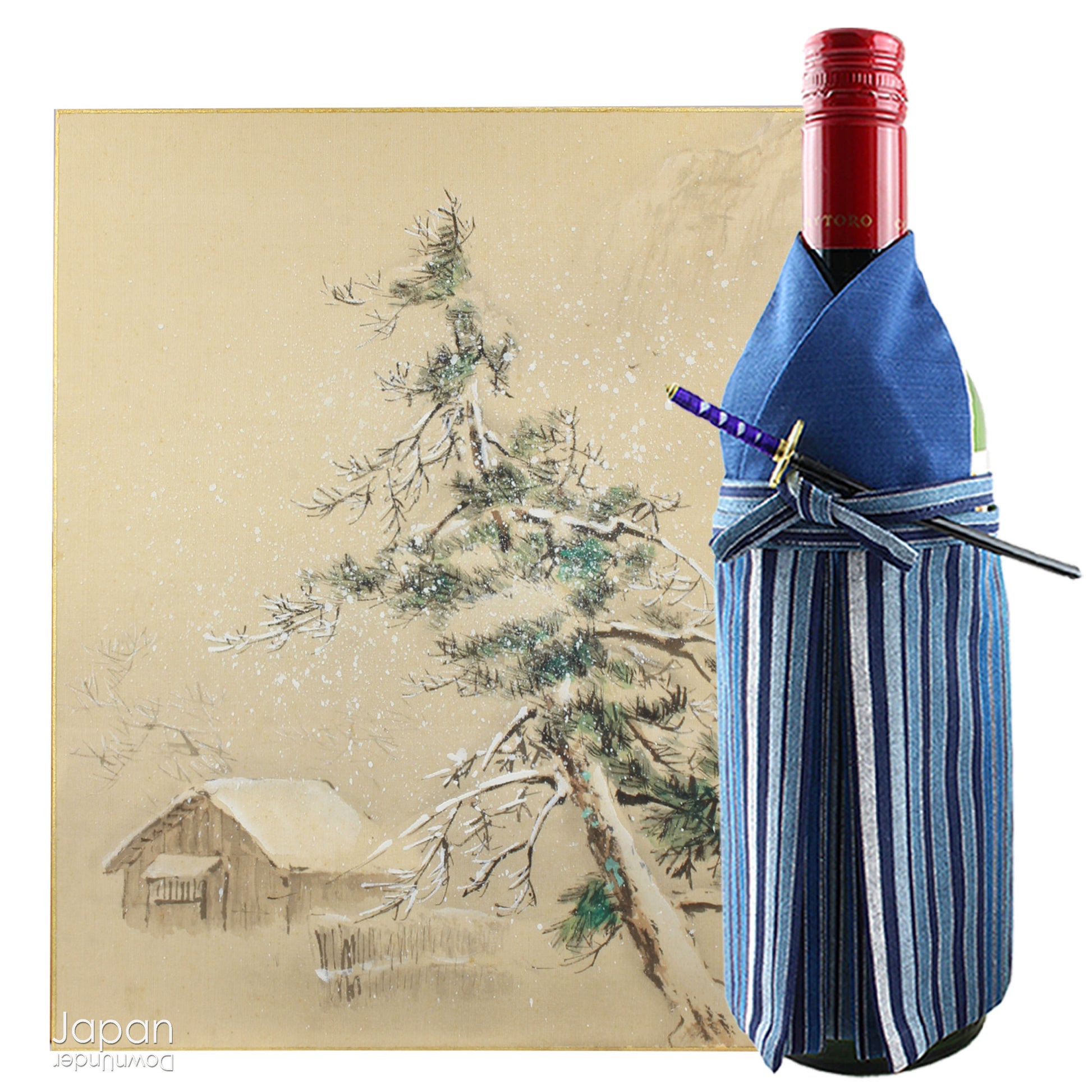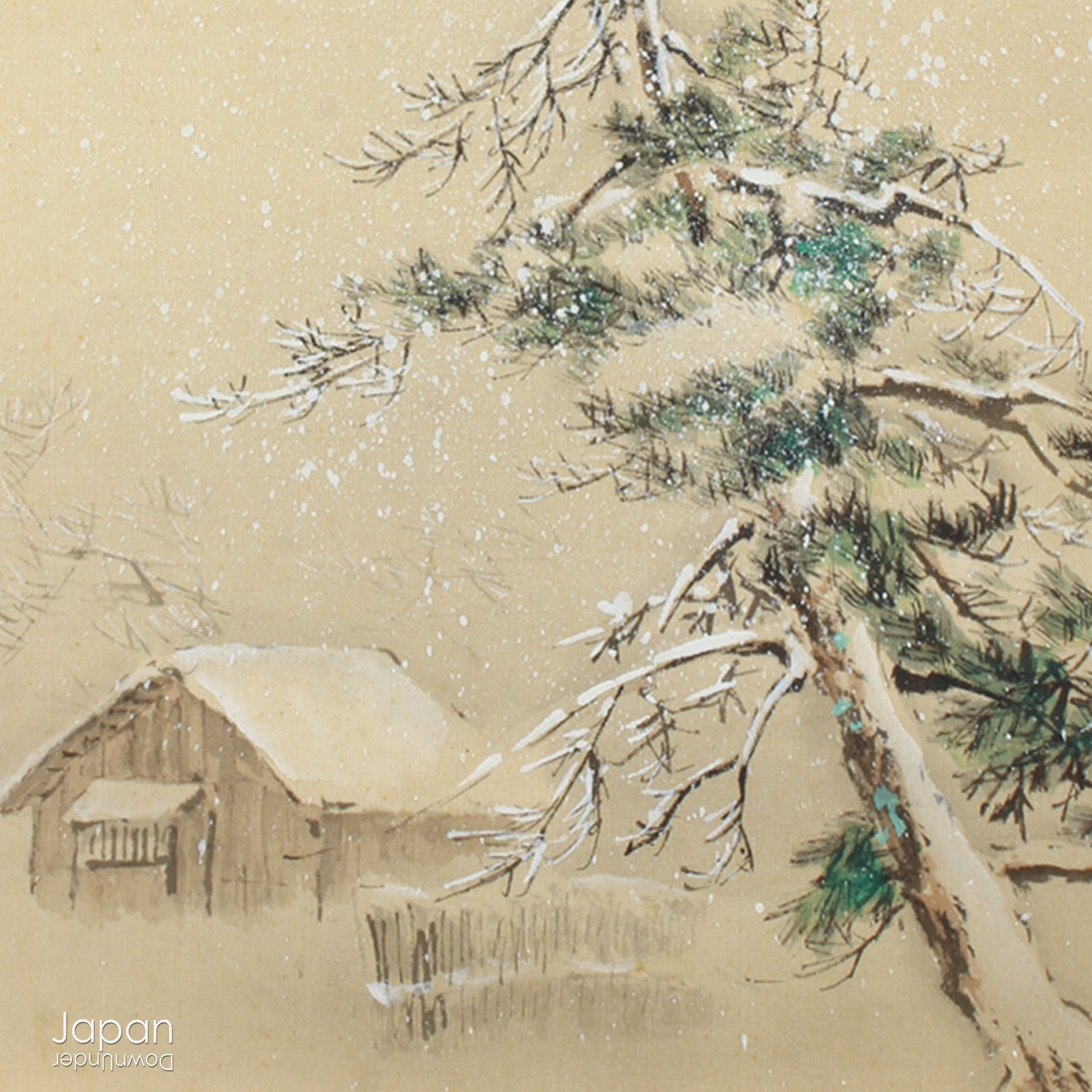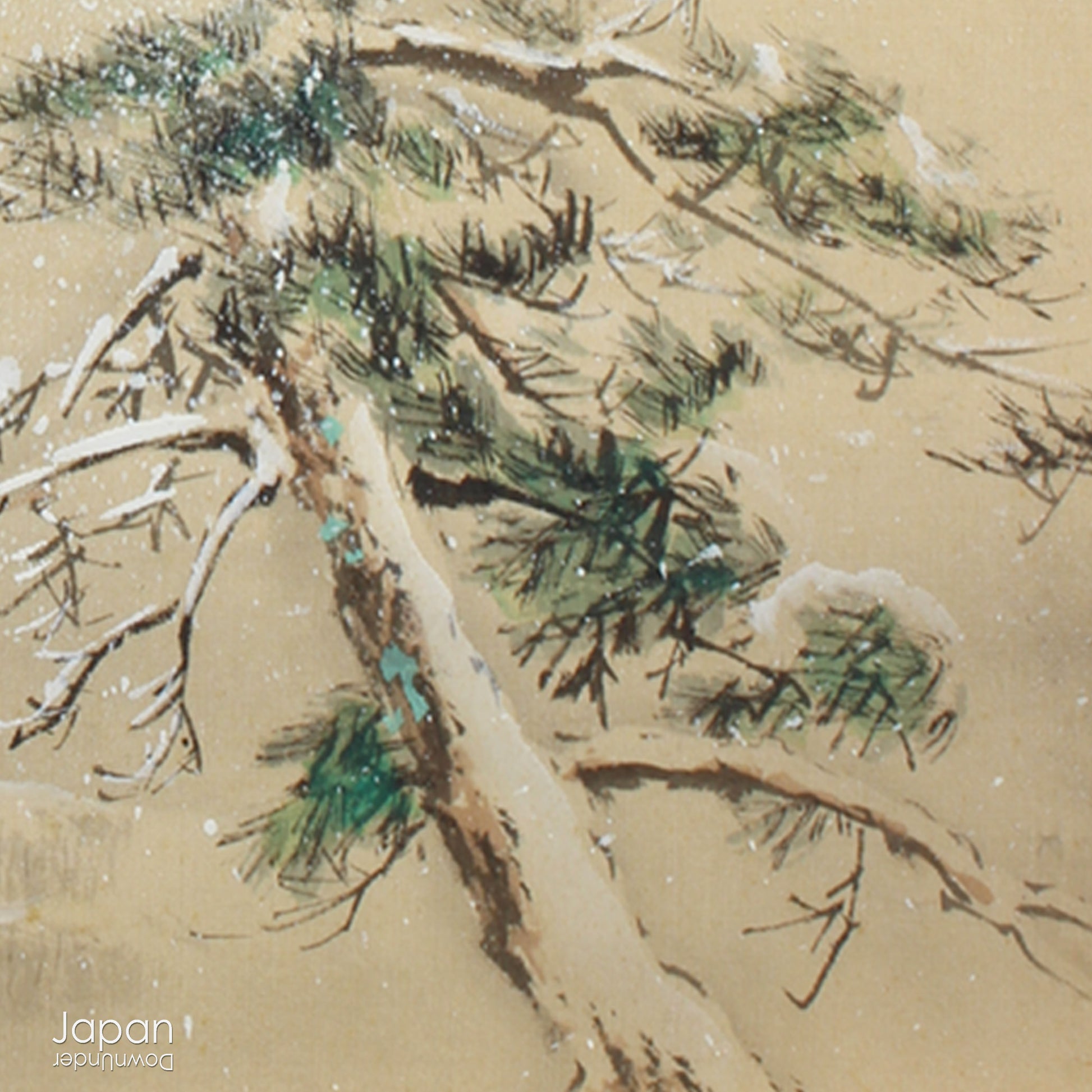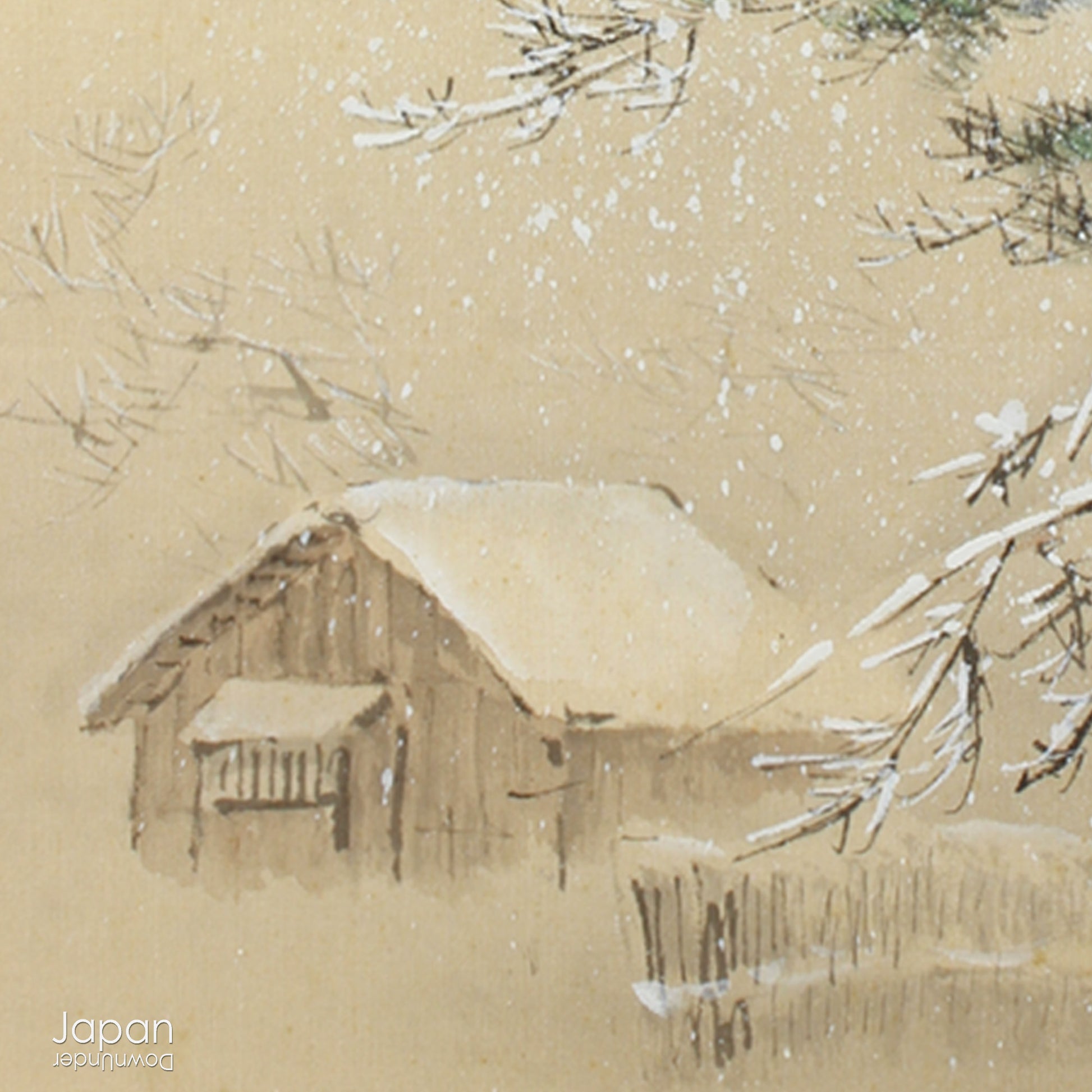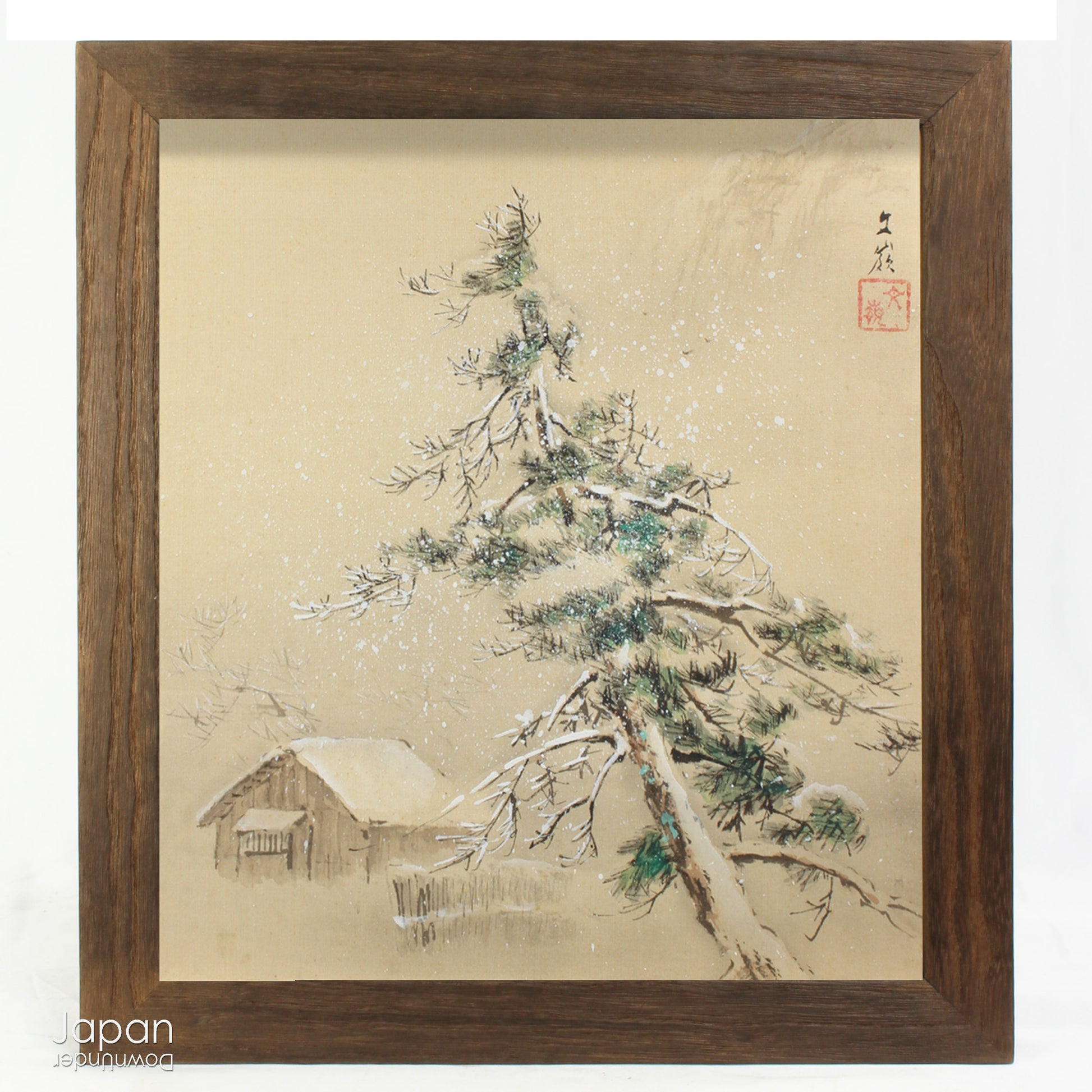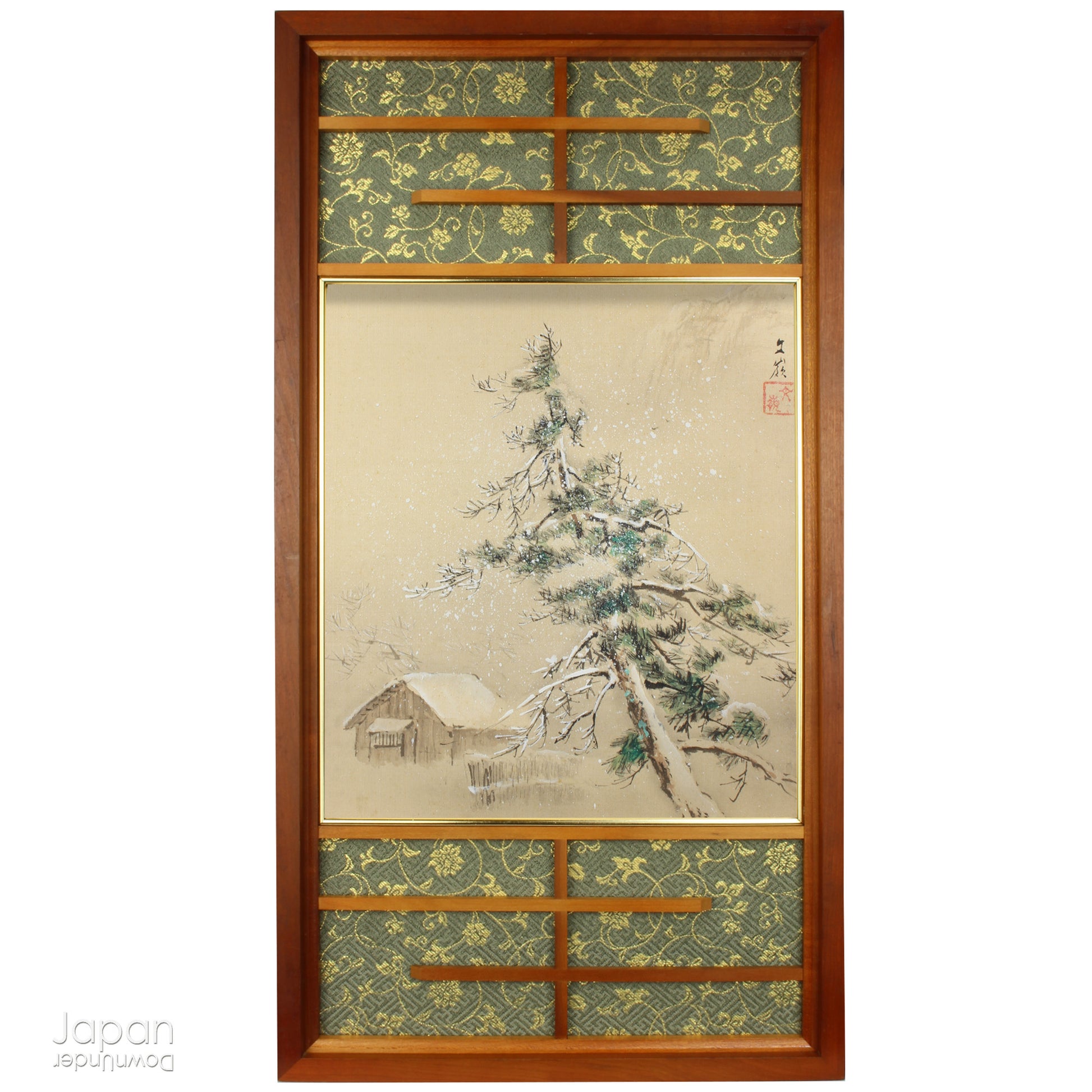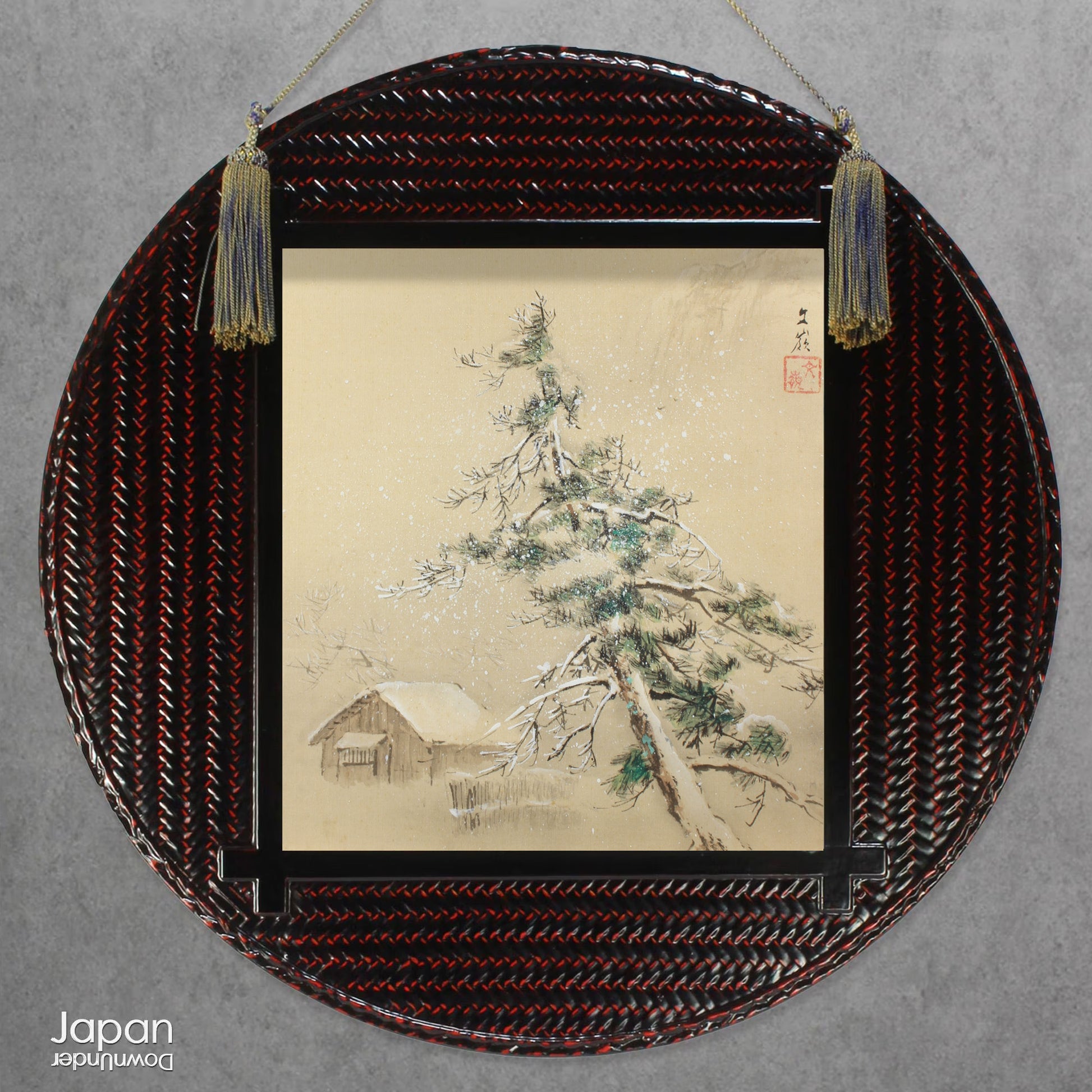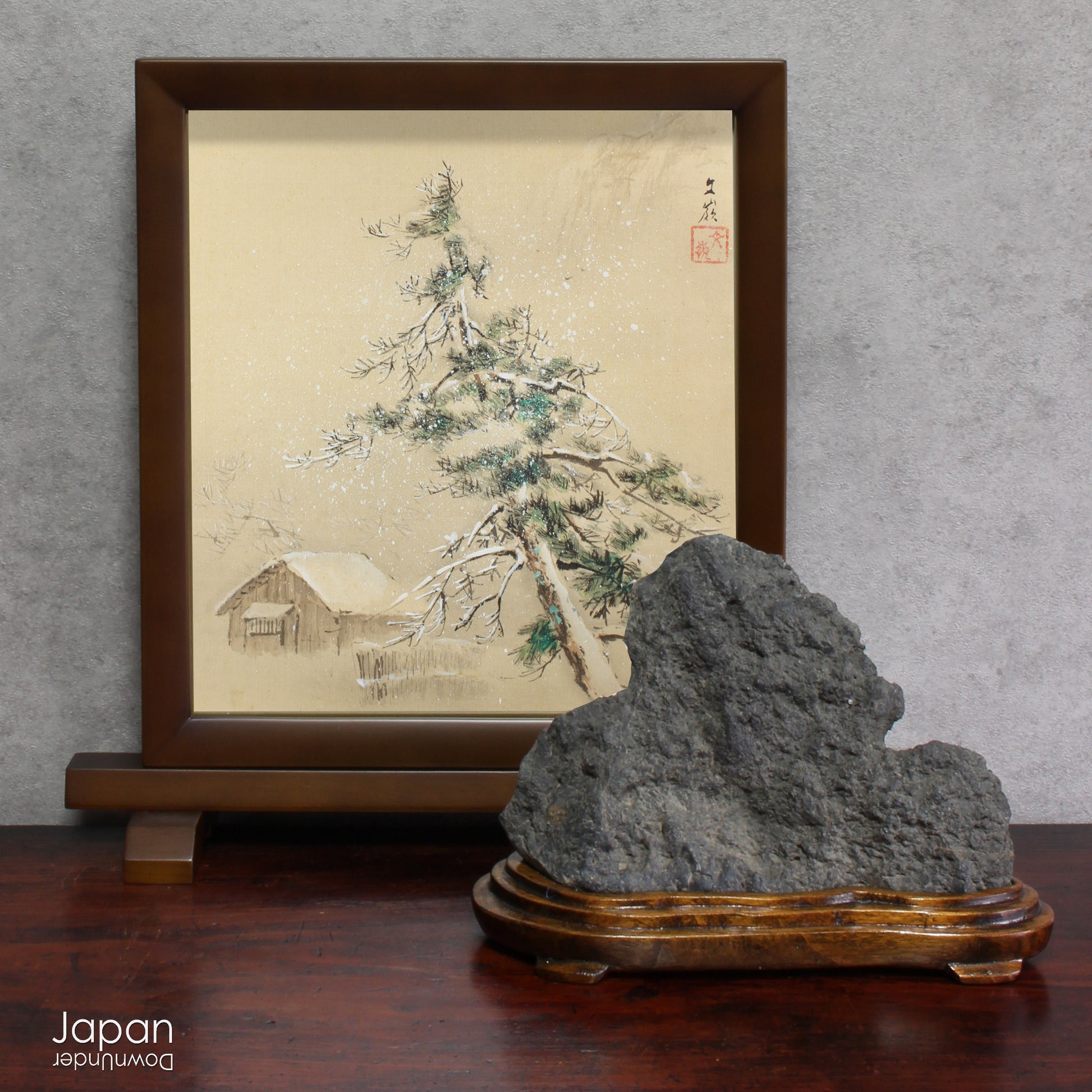JapanDownUnder
antique hand painted silk shikishi art board - japanese tea ceremony display
antique hand painted silk shikishi art board - japanese tea ceremony display
Couldn't load pickup availability
Love Japanese Style Like We Do
Add a touch of elegance to your space with this one-of-a-kind antique hand painted silk shikishi art board. Originally designed for display at the Japanese tea ceremony, this wonderful piece of art is filled with traditional charm. Perfect for art collectors and those wishing to add a unique conversation piece to their home decor.
Shikishi were displayed at the tea ceremony, on a hanging scroll in the tokonoma. They were selected for decoration according to seasonal nature and events. This shikishi art depicts a beautiful Japanese mountain scene in winter. Central to the scenes is an isolated, old mountain hut with a snow covered roof, in the foreground a pine tree, boughs laden with snow, all contrasted against a bleak sky with a glimpse of mountains. The beautiful melancholy and lonely scene reflects the true essence of wabisabi found in Japanese tea culture. The art is painted in soft pastel green and brown Japanese gansai watercolors. The brush work is detailed and the minimalistic colors and subject matter lend to its calming presence. The shikishi art board is signed by the artist and stamped with the artist’s red seal.
The shikishi is in good antique condition. The paint work has some slight foxing and toning. There are no bends or insect damage. The shikishi has been dusted and placed in a special cellophane bag made especially for shikishi storage.
There is something special about these old pieces. The fading and deepened richness of the lighter colors over time gives them a particular warmth and beauty. Once framed and hung for display they are really eye-catching. As shikishi are a standard size, you can rotate your collection around, using the same frames, easily changing your interior atmosphere to suite your color schemes, moods and the seasons.
- shikishi measures 242 mm (9.5”) x 272 mm (10.7”). Regular size.
- weighs 100 gm.
(listing for primary silk shikishi board only)
(If you are buying more than one shikishi, please contact us for a shipping discount prior to your purchase. We cannot discount after the transaction has been completed)
SHIPPING INFORMATION
- please read our shipping notes in shipping policy.
- we use recycle packaging and wrap for safety, rather than appearance.
ABOUT OUR VINTAGE, ANTIQUE AND OTHER ITEMS
We list pieces we feel are worthy of display. There may be scratches, dents, fading and signs of wear and tear. We try to explain the condition of each item exactly, but may miss something.
Information regarding the item and it’s age is obtained from dealers and our personal research. We do our best to give you the correct information but please be aware that we cannot guarantee this information.
Please message us prior to purchase with any questions you may have about our products.
SHIKISHI BOARDS
Shikishi boards are made from fine handmade washi paper laminated to a hard board backing. They are edged with a strip of gold paper and are used for sumi-e paintings, haiku poems, calligraphy and watercolor paintings. There are also silk screen and printed shikishi too. The regular size measures 242 mm (9.52”) x 272 mm (10.7”). Lately a mini size, measuring 120 mm (4.73”) x 135 mm (5.32”) has also become popular.
Traditional shikishi art is based around the seasons and seasonal events. Paintings of flowers, animals, fish, vegetables, lucky images, events, such as Hina Matsuri. boys day, bean throwing day and New Year can be found. Japanese people rotate around the paintings to reflect the season, making a display to keep themselves in touch with the beauty of nature and yearly festivities, from within their own home.
Japanese shikishi were traditionally attached to a hanging scroll and displayed in the tokonoma of a formal Japanese tatami mat room. Recently people do not have a tokonoma so some lovely frames for shikishi have become available. They still give you the option to change around your art according to the seasons and also give you the freedom to make a display in any room you like.
WABI SABI
Wabi sabi is the beauty of imperfect things. In Japan, wabi sabi is imperceptible but everywhere: a crack on a teapot, the wood of an old door, green moss on a rock, a misty landscape, a distorted cup or the reflection of the moon on a pond.
The idea of wabi sabi is the contemplation of something that becomes more beautiful as it ages, fades, and consequently acquires a new charm.
Sabi means the delightful contemplation of what is old and worn; the beauty of faded or withered things; things old but elegant; being rusty, all with the impression of peacefulness.
Wabi can mean loneliness or melancholy, the appreciation of a serene life, far from the urban hustle and bustle. It is an aesthetic sensibility closely related to the tea ceremony, referring to the general atmosphere and the objects used during this formal service.
As a sensitivity that leads to happiness, and an acceptance of the beauty of simple and natural things, wabi sabi is a daily way to experience little joys. When admiring a landscape, an object, or a painting, during a conversation with friends or when sharing a moment with a good company, everyone can feel the notion of wabi sabi.
Share
